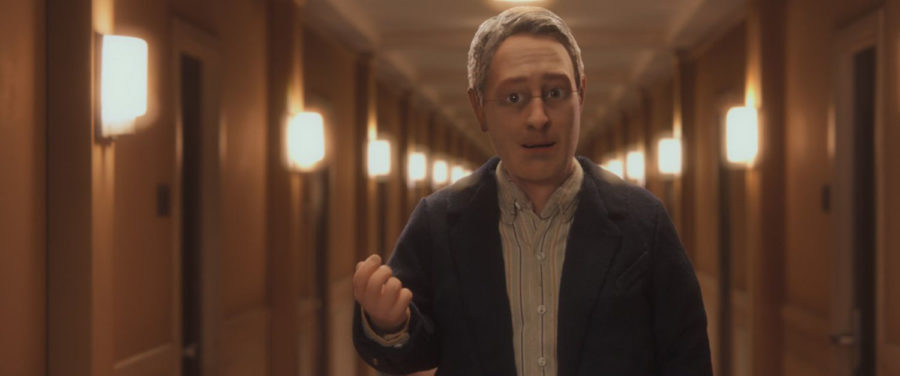Salukis work on Oscar-nominated film
January 19, 2016
Working on an Academy Award-nominated film can be a once in a lifetime opportunity, and for five Salukis, that dream is now a reality.
Susie Shircliff, Charles Moore, Danny Cox, Ian Vertovec and Holden Jones, all of whom are enrolled in or have graduated from the department of cinema and photography, worked on the stop-motion animation film “Anomalisa.”
The film is one of five films nominated for the 2015 Academy Award’s Best Animated Feature. The award ceremony will air Feb. 28.
Advertisement
“Anomalisa,” written by Charlie Kaufman of “Eternal Sunshine of the Spotless Mind” and “Adaptation” fame, is co-directed by Kaufman and Duke Johnson. The film tackles serious themes and issues, such as depression, something rarely done in theatrical stop-motion animation.
Shircliff, who is a SIU graduate living in Burbank, Calif., worked on “Anomalsia” from July 2013 to December 2014. She started out as an intern who helped the lighting and camera department. She later got hired on as a light technician, helping Director of Photography Joe Passarelli and Gaffer Rob Kraetsch.
She helped set up and build lights, Shircliff said. It was a puzzle to complete, because the space was so unique.
“It was kind of cool to work with a [director of photography] that was so challenging to get a solid vision,” Shircliff said.
Starting out, she did not know a lot about lighting, she said. It was not her forte coming out of school, but like any filmmaker, Shircliff knew she had to try it out.
After getting hired on as a light technician, she was told they would teach what she needed to know.
“Stop-Motion is a family community,” Shircliff said. “You end up working together all the time.”
Advertisement*
She describes “Anomalisa” as a character driven, animation film for adults, something audiences rarely see.
Moore, a graduate from Evansville, said working on “Anomalisa” was like no other experience he has had as a filmmaker.
“Whenever you are doing stop-motion, you are working with animators and the continuity is really important,” he said. “You have to be real detail-oriented and careful.”
Everything on a film such as “Anomalisa” is set to a smaller size, Moore said. One tiny bump of a table and an entire shot could need to be reset, he said.
Moore did lighting and other jobs for the film. His job on “Anomalisa” was as lighting technician, but he has worked all over the lighting world.
“There is a lot of spontaneous situations where you have to improvise,” he said of working an on-set lighting job.
He graduated in 2012 and moved to Los Angeles in 2013 with six friends from Carbondale. Moore said when he has worked as a gaffer, he oversaw the electrical power on set. He has also worked as a key grip, where he was in charge of rigging lights for the set.
On this film, his job included setting up and operating lighting equipment..
Cox, a 2015 graduate from Louisville, Ky., said his job was to help set up and tear down lights, keep stations neat and assist the grip. Cox said by the time he got there, most of the people had been working on the film for more than a year.
Jones, a senior from Jacksonville studying cinema and photography, worked with Cox as a lighting intern. The two helped create rigs, adjust lights and build lighting schematics.
Contributing to “Anomalisa” was a new experience, Jones said. He had worked on one other stop-motion film and said this movie, while hard to make, was incredibly rewarding.
“After working on ‘Anomalisa,’ I know what quality filmmaking looks like — both on screen and behind the scenes,” Jones said.
Jacob Pierce can be reached at [email protected] or 618-536-3325.
Advertisement









